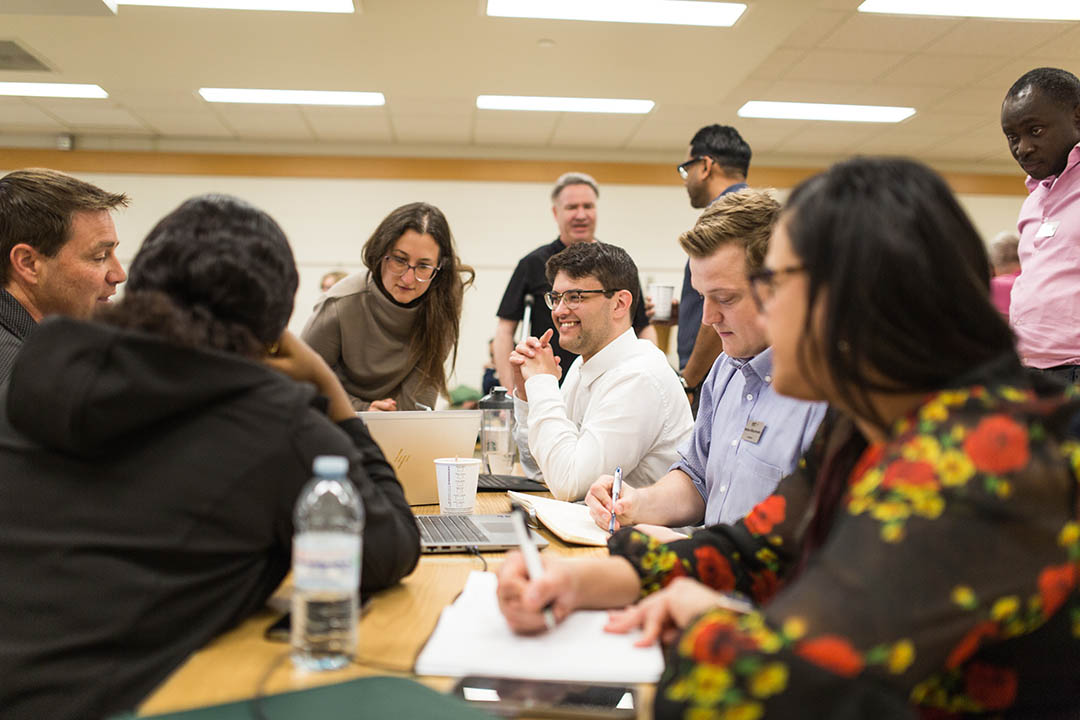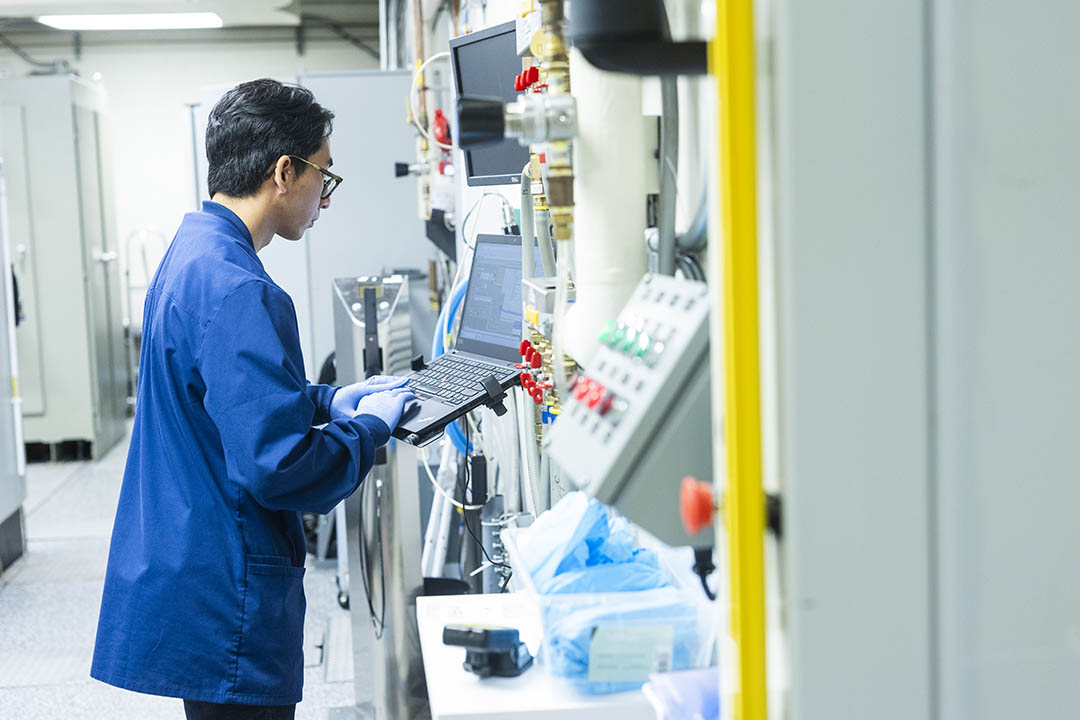
A lasting legacy: USask shines as a nuclear research hub
In 1951, the University of Saskatchewan (USask) changed the face of nuclear medicine forever.
By Matt Olson, Research Profile and ImpactNicknamed the “cancer bomb,” Dr. Harold Johns (PhD) and a team of then-graduate students that included the renowned Sylvia Fedoruk pioneered a cancer treatment using cobalt-60 radiation therapy.
At a time when traditional cancer treatments were just starting to enter the realm of nuclear medicine, the cobalt-60 therapy was a gamechanger. A true breakthrough in nuclear technology and innovation, the cobalt-60 treatment spread quickly and is responsible for helping thousands of cancer patients around the world. Its ingenuity and originality also put USask’s research on the map.
The bar set by the cobalt-60 research group is a level of excellence that USask scholars have continuously strived for in nuclear technology and research ever since. Whether in medical treatments or in advanced imaging, mining, engineering, energy resources and more, USask has grown to be a hub for nuclear innovation in Canada and around the world.
“The future is around building nuclear treatments, nuclear technologies, eventually nuclear power in the province,” said Dr. Jeter Hall (PhD), the executive director of the Sylvia Fedoruk Canadian Centre for Nuclear Innovation Inc. (Fedoruk Centre), a research centre at USask.
The Fedoruk Centre is named after cobalt-60 therapy pioneer Sylvia Fedoruk. Her many academic accomplishments include helping develop the dosimeter, a device used to monitor the amount of radiation given to cancer patients, and developing full-body nuclear scanning equipment.
Thanks to the Fedoruk Centre’s Saskatchewan Cyclotron Facility — which is uniquely positioned to allow for in-depth research and, among other uses, the development of radioisotopes for medical purposes — USask continues to advance nuclear medicine. Hall highlighted the development of actinium-225 using a cyclotron and radium-226 as a target, marking the first time this has been done in Canada. The isotope can be used in new cancer treatments and is one example of the ongoing nuclear innovation at USask.
“We have funded a number of research chairs, and USask has deep expertise in radiochemistry, nuclear pharmacology, all the way to the clinical usage of these nuclear medicines,” Hall said. “It’s unique, the depth and breadth of the team on campus.”
USask researchers have built off the honoured tradition and framework laid by pioneers like Fedourk and Johns. An Institute of Electrical and Electronics and Electronics Engineers (IEEE) milestone plaque was recently installed commemorating the groundbreaking 1951 cobalt-60 achievement.
The technology for the future
In addition to medical research and innovation, nuclear science is rapidly becoming the technology of the future in areas like energy, and once again USask researchers are leading this new and exciting wave of innovation.
Dr. Andrew Grosvenor (PhD), department head of chemistry in USask’s College of Arts and Science, co-lead of the Energy and Mineral Resources for a Sustainable Future Signature Area of Research and a leading researcher in nuclear chemistry and nuclear waste sequestration, said there are solutions to be found in this research area for problems being faced now and into the future.
“As a country, we are moving towards net zero (carbon emissions) at a future date. The way we generate electricity in Canada will have to change,” Grosvenor said. “We need to be exploring these different energy strategies and putting them into our energy mix with other clean energy solutions.”

USask is strategically positioning itself for the next generation of nuclear scientists. In the summer of 2025, USask hosted the Canadian National Nuclear Energy Management School (NEMS) in co-operation with the International Atomic Energy Agency (IAEA). The goal of NEMS is to improve the skills and abilities of Canadian nuclear energy and technology professionals.
Hosted by USask’s College of Engineering, the program—supported by SaskPower and the Government of Saskatchewan—boosted the knowledge of early and mid-career nuclear professionals. In recognition of the strong leadership and ability in nuclear sciences at USask, 2025 was the first year the school was hosted in Canada outside of Ontario.
Burgeoning potential across disciplines
Although creative innovation in nuclear imaging and medicine continues—like Dr. Chris Phenix’s (PhD) research into using nuclear imaging to study the progression of Alzheimer’s in the brain—other USask researchers are diving into a variety of areas of nuclear science.
From the College of Engineering’s Dr. Jerzy Szpunar (PhD) researching safer and accident-tolerant fuels for small modular reactors, to Dr. Greg Poelzer (PhD) and Dr. Bram Noble’s (PhD) Community Appropriate Sustainable Energy Security (CASES) research initiative exploring energy security in Northern and Indigenous communities, to the cutting-edge investigation of nuclear materials and solutions through Canada’s only synchrotron at the Canadian Light Source on the USask campus, there are few places more uniquely suited to tackle nuclear innovation than USask.
USask’s College of Engineering has also connected on multiple memorandums of agreement (MOA) with nuclear research organizations to continue growing the field, including an MOA with Atomic Energy of Canada Limited and Canadian Nuclear Laboratories, and an MOA with Westinghouse Electric Company intended to accelerate microreactor deployment in Saskatchewan.
“A unique aspect of the nuclear research we’re doing on campus is that it’s not focused in one field,” Grosvenor said. “It covers both the technological side of it, but also the societal side. And both of those things need to be understood if you want to push nuclear research for the benefit of Saskatchewan.”
The Energy and Critical Minerals for a Sustainable Future Signature Area of Research at USask, led by Grosvenor and Poelzer, is helping to champion this work from the deeply scientific level to the social level. As Grosvenor puts it, understanding the social and public implications of leaning into nuclear technology is important to keep that ball rolling forward.
And for Hall, Grosvenor and other nuclear researchers like them, USask—with its top-tier facilities, ideal location in the heart of Canada and world-class infrastructure uniquely suited for nuclear science—stands proud as a hub for nuclear innovation inspired by its past and looking eagerly to the future.
“You need both the tools and the people to create really great capacity, and USask has really built something great here,” Hall said.
“We can play a critical role not only in the province of Saskatchewan, but within the country,” Grosvenor said. “We’ve got the people, we’ve got the infrastructure, we also have a rich history in it. It’s not new to us.”

